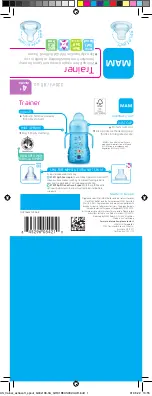
Subject to modifications.
© Vestamatic GmbH
Art.-Nr.: 85400521 H1 • Vestamatic GmbH • Dohrweg 27 • D-41066 Mönchengladbach • www.vestamatic.com
2/2
G
VRS Luxsensor S
3.
Registering the light sensor to the control.
The sensor must be registered to the control, so that the control can
receive the movement commands.
To register the sensor, activate learning mode on the control and then
briefly press the sensor button (< 3 seconds). The LED lights up briefly
and the sensor code has been registered by the control.
If an empty battery symbol appears on the control system’s information
display, replace the battery to ensure that the VRS lux sensor continues to
operate reliably. Unscrew the VRS lux sensor housing by turning it slightly
to the left and replace the CR 2032 type battery.
Then reassemble the housing by following the instructions in the reverse
order. When the sensor emits the next transmission signal, the battery
warning will automatically disappear from the control system’s information
display.
ATTENTION!
The positive pole must be visible!
Keep batteries out of the reach of children.
ATTENTION!
Radio transmission is not suitable for safety operations,
such as emergency-stop, emergency call or warning signals.
Signals are transmitted across the Europewide approved 868 MHz fre
quency band. The radio transmission range largely depends on the con
structional circumstances of the building. If other adjacent radio devices are
simultaneously sending signals, mutual interferences cannot be debared.
Such interferences can also affect individual units of a group of receivers.
Observing the following instructions will minimize these interferences:
Avoid to mount radio receivers onto or adjacent to metal surfaces.
Maintain minimum 50 cm clearance to consumer loads, such as micro
wave ovens or TV sets.
Keep a minimum clearance of 50 cm between each mounted radio re
ceiver.
Keep a minimum clearance of 50 cm between a radio receiver and a
radio transmitter.
If a radiotransmitted command cannot be clearly detected, the command
execution will be suppressed by means of an integrated automatic safety
function. The command must then be issued again.
The disposal of electrical equipment and batteries in household
waste is strictly forbidden.
The symbol (dustbin crossed out, in line with WEEE Appendix IV) in
dicates separate collection of electrical and electronic products in EU
countries. Do not dispose of the device or battery in your household
waste. Ask your town or local council about the return and collection
systems available in your area to dispose of this product.
Exchanging the battery
Instructions of radio receivers
Disposal of waste




















